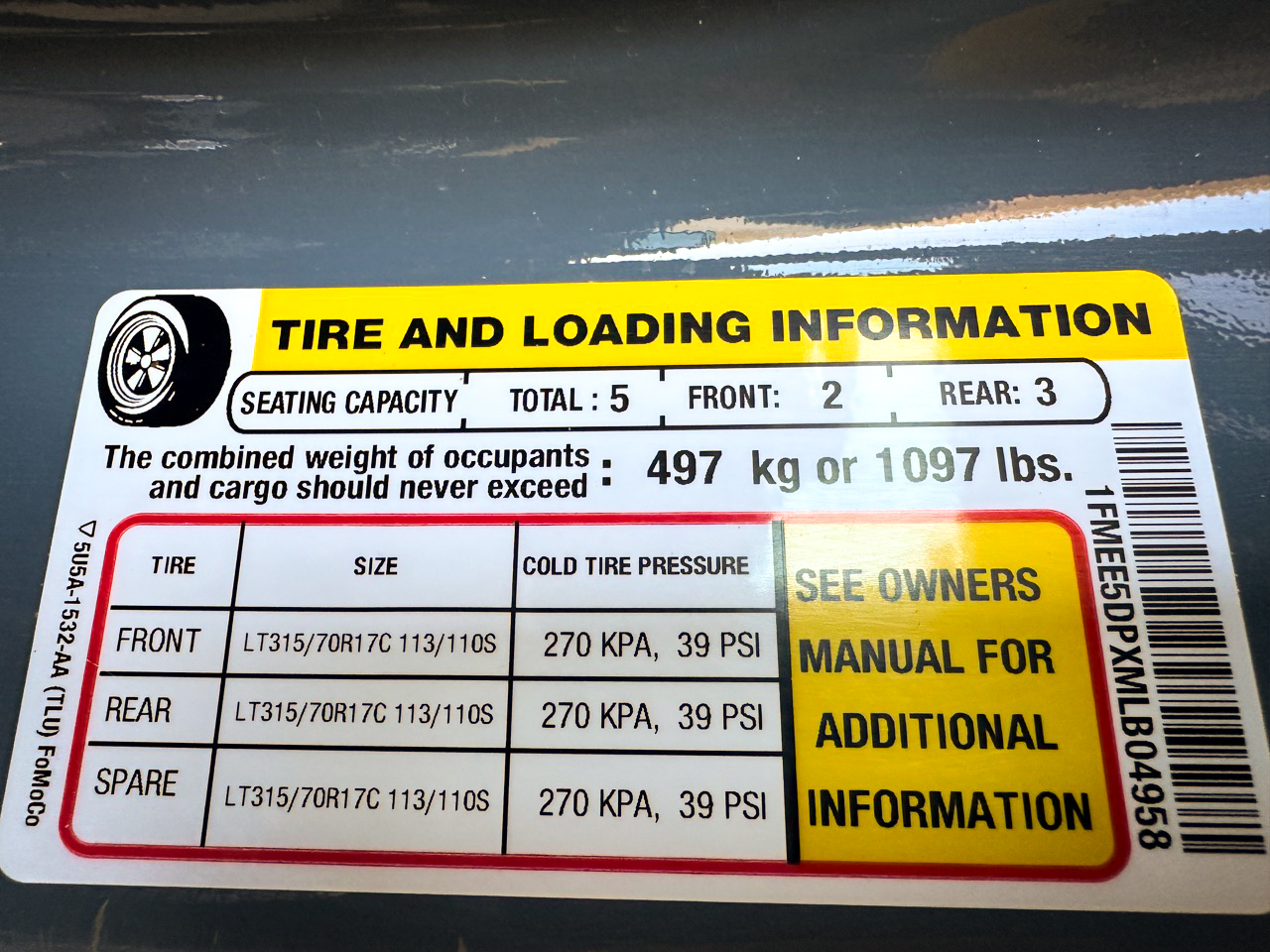Hey guys! It’s Chuck again and I’m back from Moab! The last time we discussed airing down. So, this time we’ll talk about airing up. As we all know, off-roading can be an exhilarating adventure. However, it requires proper preparation and maintenance of your vehicle. That certainly includes the tires. After a thrilling day on the trails, it’s crucial to air up your tires before hitting the pavement again. Here’s a guide to help you refine your process and better understand the importance of airing up off-road tires.
Why Airing Up Matters
Last time we discussed how airing down improves traction on rough terrain like sand, mud, and rocks. However, driving on under-inflated tires on regular roads can be dangerous and increase your chance of an accident. It also can lead to poor fuel economy, reduced handling, and increased tire wear. Therefore, airing up your tires to the recommended pressure is essential for safe and efficient driving on paved roads.
Target PSI and the Tools You’ll Need
There are a few basic tools you’ll need for airing up. But first, make sure you know the PSI you’ll air up to. This can be found on the label on the inside of the driver’s door. If you’ve replaced the stock tires with different aftermarket tires, you should still look at using Ford’s recommended PSI for that new tire. Consider purchasing a quality air compressor. There are many options, from cheap to very expensive. The decision on what type will depend on how often you offroad, and your budget.

Here are the tools you’ll want to have:
- Portable Air Compressor Types
- The most popular and perhaps the most effective type of compressor is a portable air compressor that connects to your battery. Some of these can be installed permanently in the engine bay, or on the spare tire mount. These are very convenient as they’ll always be there when you need them. An example of this style of compressor is the ARB Twin Air with the Bronco engine bay mount. I prefer to have a more mobile-style compressor, allowing me to carry the compressor from my Bronco to another vehicle. Small air compressors that plug into the Bronco’s 12-volt accessory outlet are another option, however, they are not very powerful. Another option that seems to be catching steam is power tool manufacturers (Milwaukee, Dewalt, etc) are making lighter-weight air compressors that use the rechargeable batteries you may have already purchased for all your other home power tools. One more option is the CO2 tank style, such as a Power Tank. These are very fast for filling up. The downside is that you have to fill them up when they run out of CO2. I have one of these and I love it for situations where I need to add some air into one tire.

- Air Hose and Attachments
- Typically, everything you need comes with the compressor, including the air hose and any attachments you might need. In the past, it was normal to have a single air hose that would run from the air compressor to the tire. Now, many companies are offering 1 compressor with a 4 hose setup that allows all 4 tires to be connected at the same time. This can absolutely save a lot of time, but only if the air compressor can fill all 4 simultaneously. Attachments can be from simple air chuck to quick disconnects that make the process quick and painless.
- Tire Pressure Gauge
- The Bronco has the dashboard display for air pressure, however, it’s handy to have a tire pressure gauge that can be used when standing at each tire. It can also help identify any air pressure sensors in the tires that might be delayed in sending the PSI to the Bronco.

Bronco Air Up Steps:
- Park on a Level Surface: Park your Bronco on a flat, stable surface to get the most accurate pressure readings.
- Check Current Tire Pressure: Look at the air pressure readings on the dashboard. You can also use your tire pressure gauge randomly to check the pressure of a tire. This will help you know that the Bronco is showing the right values.
- Connect the Air Compressor: Connect the alligator clips to the battery and attach the air hose to the compressor and then to the tire valve(s). Double check the connections to make sure there are no air leaks.
- Inflate the Tires: Turn on the air compressor and begin inflating the tire. Keep an eye on the pressure gauge attached to the compressor and to the values on the dashboard. The goal is to avoid over-inflation.
- Check Pressure Regularly: Periodically stop the compressor and check the tire pressure. Adjust as necessary until you reach the recommended pressure.
- Repeat for All Tires: Follow the same steps for each tire, ensuring all are inflated to the correct pressure. This step can be excluded by using a 4-in-1 air hose.
- Double-Check: It’s always a good idea to double-check the pressure to ensure consistency across all 4 tires.

Tips for Efficient Airing Up
- Understanding Cold vs Hot: If your tires are cold, perhaps first thing in the morning before you’ve driven on them, it is likely the pressures will be 2-3 lbs lower than after they’ve fully warmed up. Consider inflating a little less in this scenario, then monitor the pressures as you drive.
- Use a High-Quality Compressor: Investing in a good compressor can save you time and ensure your tires are properly inflated. Consider a high-performing air compressor with a 4-1 air hose to streamline the process.
- Maintenance: Check your compressor and other tools regularly to ensure they are clean and in good working condition.
- Monitoring Comfort and Wear: After inflating your tires, pay attention to how the Bronco drives, and if it feels terribly harsh on regular road surfaces, consider dropping the PSI slightly. Also, keep an eye on the tires for any kind of abnormal wear. If you notice the center of the tread wearing faster than the edges, perhaps you’re running too high PSI. If the opposite happens and the outsides of the tread wear more than the middle, it is likely due to a PSI setting that is too low for the conditions you’re driving in.

Driving on Fully Inflated Tires
Airing up the tires on your Bronco is a critical step in ensuring safety and the health of your Bronco. Keeping your tires at the proper air pressure can extend the life span of the tires and ensure greater performance and safety.
If you haven't already, check out my last article on How and Why to Properly Air Down an Off-Road Vehicle.

Comments
You must log in or register to post here.